Large-Scale Art Collection Claims: Protecting Private and Corporate Assets
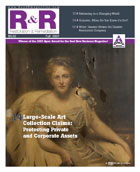
The conservation of art, artifacts and decorative objects is a field that has been practiced, performed and refined over hundreds of years. To this day new techniques and materials are being tested and utilized to further refine this marriage of art and science.
Art conservation overlaps with the restoration industry when a residence, company or institution housing items of a more sensitive nature is exposed to damage (by fire, water, mold, ice or wind, for example). It is in these situations that a specialist is needed to assist in the handling, removal and treatment of these items.
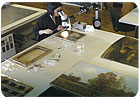
For Example
It is 8 a.m. and, after a 5-hour flight and a 2 ½-hour drive, we know there is still a long day ahead. We are soon greeted by three distraught, teary-eyed collection managers whose spring break was cut short when the climate control system malfunctioned in their art storage vault, resulting in more than 900 wet paintings, drawings, prints and artifacts, some of which are already covered in mold. Understandably, the clients were overwhelmed and did not know what to do.
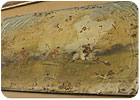
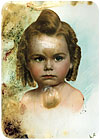
Large-Scale Recovery Strategy
Large-scale art collections often represent a considerable asset to the private, corporate, or institutional owner. The experience of handling hundreds of high-volume disaster scenarios involving art and artifacts, including some in the aftermath of Hurricane Katrina, provides invaluable knowledge for the future. The Center has assisted with the recovery of many large corporate collections, such as the LaSalle Bank photography and print collections. More recently, due to several university claims, we have employed a large-scale recovery strategy that follows a series of guidelines established over several years:- Is there a disaster plan in place? If not, detail the situation for future disaster prevention planning.
- Assemble a disaster response team and establish protocol.
- Visit on-site immediately and document the collection in situ.
- Establish safety needs and environmental requirements.
- Set up a safe staging area on-site to make an official inventory including medium, dimensions, artist, frame/mount, date and title, if available.
- Photograph every piece individually and offer any triage required.
- Establish safe packing, handling, and transportation based on the material.
- Transport in alarmed, climate-controlled, air-ride vehicles.
- Unload, examine, and test each item for condition and treatment assessment.
- Prepare a written report with condition, treatment recommendations, and cost and time involved for each item, including a collection summary. This includes establishing pre-loss and post-loss damages.
- Triage items in need of immediate care and stabilization after written authorization.
- Slowly, under controlled and monitored conditions, return the pieces back to a stable environment of temperature and humidity controls ranging from 68-72 degrees Fahrenheit and 40 percent to 50 percent humidity.
- Await approval of treatment and, once written authorization is received, proceed with conservation treatment recommendations.
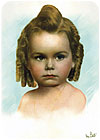
Lessons Learned
After reviewing many scenarios and recoveries over the years, we tend to see a host of repeated lessons learned. Using this information as a preventive tool is our current lecture focus across the nation- Keep art collection information off site: policy documents, disaster plan, disaster team members and phone numbers, inventory, appraisals, and documentation/photography.
- Establish a disaster plan and a designated full-scale team in advance.
- Thoroughly walk through and review a punch list for all warehouse storage exposures.
- Thoroughly review and collect advice on any basement or first floor exposures.
- Consider climate exposures relative to art collection mediums. Example: panel pictures in a dry climate like Arizona are at risk of splitting – or photography in a hot and humid environment like Florida at risk of adhering to framing materials.

On-site Tips
When on-site dealing with art, there are additional details that need to be considered: correct identification (artist, title, medium dimensions); cause of damage; condition stability; risk of transportation; insurance status/coverage during transport; best method of transportation and proper packing/crating procedures. A specialist in art conservation will have insight from years of experience and can advise how to best manage the situation. For example:





Once items are stabilized, a conservator should prepare a thorough condition report of each piece and provide detailed treatment recommendations with photography for your review. This process should include consultation with clients to determine which items are eligible for conservation and expected treatment outcomes, as well as any items that are potentially a loss.
When private and corporate assets are held within an art collection, a timely response can make the difference in saving the value of the collection. It takes years of experience to build an understanding of what to do and how. Having a conservator on your team for these scenarios can be an invaluable addition to your restoration and recovery services.
Looking for a reprint of this article?
From high-res PDFs to custom plaques, order your copy today!






